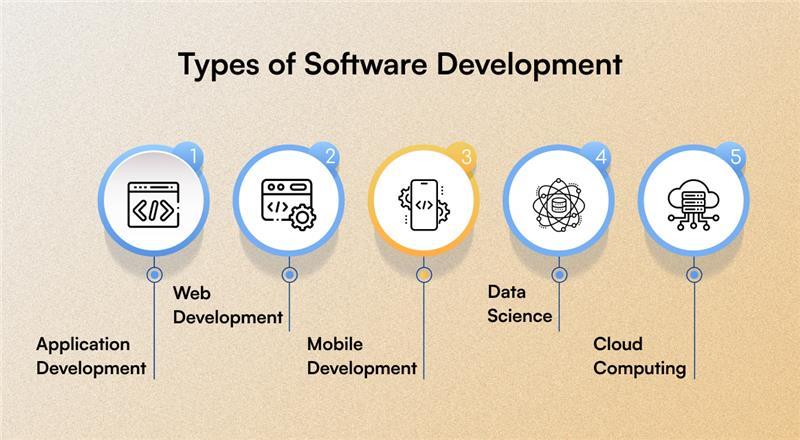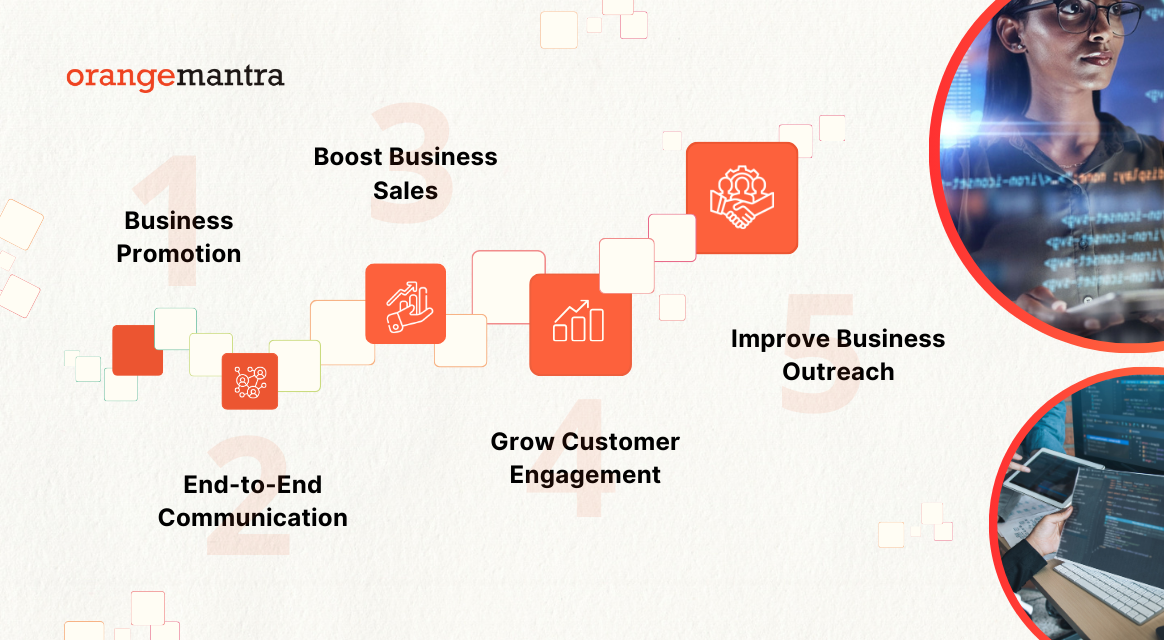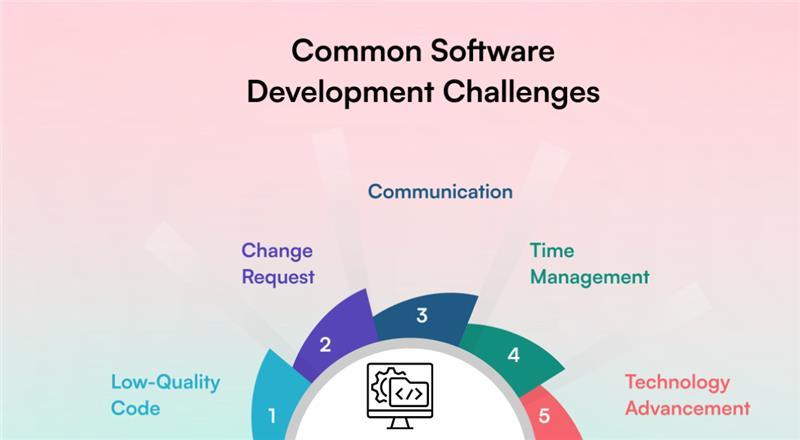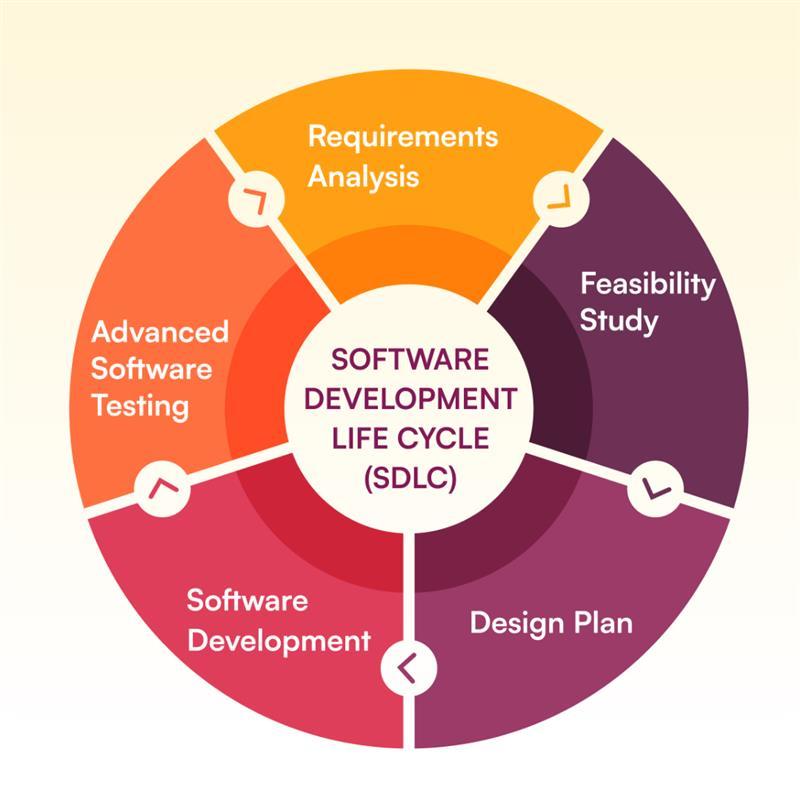Have you ever thought of investing in application development? Custom software development has been a crucial integration in every aspect of the enterprise. Businesses that want to drive growth and expand their user base applications are the best way.
The software helps to maintain business agility, flexibility, and lower operational costs. The software has opened countless opportunities for businesses. Such as document management, streamlined communication, data security, and personalized service, etc.
Introduction to Software Development
Software development has its importance to meet business needs in this digital age. Whether we talk about startups, or established brands software development has its importance. It is not hidden from any of us that enterprise software development is the most demanding service across the industry.
According to Statista report, spending on enterprise software will cross US$195.30bn by 2029. It is a huge number to encourage you to invest in enterprise software development. But before discussing diving into further discussion, let us understand the basics of the software.
Types of Software Development
Below categories meeting different business needs.
1.Application Development
This software is an individual or collection of programs to help users, and businesses meet desired functionalities. These applications work on operating systems to meet certain roles.
Examples: Java, C#, C/C++, and Python .
2.Web Development
This is an important type of software development including designing a website to run on web browsers. It includes both static and dynamic websites. It involves connecting multiple web pages to run on the internet. Several web technologies are available in the market to make an engaging and secure website.
Examples: HTML, Javascript, PHP, Python, and much more.
3. Mobile Development
This software development is for mobile platforms targeting iOS and Android devices. Mobile apps development services offers a perfect way to engage prospects looking for specific mobile applications . They can book tickets, do banking, eLearning, and make payments straight from mobile apps.
Examples: Android, Objective C, HTML5, Swift, Java, Kotlin, Flutter, and much more.
4. Data Science
Most business groups face challenges in managing large chunks of data. It becomes tough to get insights from data on a real-time basis. That’s where Data science development comes in as a savior.
Software development for data science has become a key service section for enterprises. Data Scientists present data to machines in the correct form to help them make their own decisions.
Examples: Tableau, Apache Spark, Julia, and much more.
5. Cloud Computing
Cloud computing applications integrate multiple remote servers to save data and access services on the go. The software development company consulted for cloud computing software developers to create software to power cloud infrastructure.
Examples: Amazon Web Services (AWS), Google Cloud, Azure, Onedrive Storage, Github, and much more.
Importance of Software Development
Businesses invest in software development to stay competitive and meet end-user needs. It helps businesses to streamline and automate their tasks, improve customer experience, and reduce operational costs.
In the era of digital infrastructure, software stores, and drive insights for smart decision-making. Also, Software designers focus on security and data protection. Planning for software development brings multiple advantages to your business.
Business Promotion
Promoting your business through a legacy approach is insufficient to engage prospects. Software development for promotional activities can take your business to the next level.
Brands can boost their visibility over the internet through social channels, SEO, e-mail, push notifications, and much more. All has become possible with software.
Boost Business Sales
Software development improves your brand visibility resulting in significant growth in sales. You can drive sales from different parts of the world using software tools. Besides, predictive analysis, data analytics can help you know your customer’s requirements in detail. You can build personalized solutions and offer services to grow sales.
End-to-End Communication
Software development helps your business to build a simple and secure communication channel with your customers. It is also the fastest mode of spreading brand awareness and engaging prospects.
Grow Customer Engagement
Business marketing using software applications helps in building customer loyalty and delivers better engagement. Enterprises using the software have good strategies to retain existing customers and engage new ones.
Improve Business Outreach
Software development is the best and a popular means to apply on-the-go marketing without doing additional efforts. It becomes simple to engage customers using software applications at any point.
Common Software Development Challenges
Software development involves a lot of dedication, expertise, and time. It is a challenging job and needs regular updates to meet user needs.
But with expert guidance from Nearshore software development and preparation, challenges of development can be addressed. Despite the challenges, it is an important investment for smooth business processes of all sizes.
We have discussed a few common challenges experienced during software development.
Low-Quality Code
One of the major challenges during software development is building low-quality code. This usually happens when a developer is doing multiple tasks, under deadline pressure, and lacks the skills to review code.
Another major reason is developers have no proper understanding of code requirements and industry standards.
Change Request
The change request is a common challenge faced during the software development process. This happens when multiple requirements are flexible and come on the go.
Sometimes projects scope expands beyond its original requirements. Changes result in additional business costs, training, and missing deadlines.
Communication
Lack of communication with clients and internal teams results in low-quality code. Developers need a regular understanding of client requirements for which communication is necessary.
Sometimes, clients are not aware of their actual requirements of what they want to add to a software application.
Time Management
Time management is one of the biggest challenges of development. Developers face so many deadlines and code deliverable, it is tough to be on time. However, when properly planned and guided, time can be easily managed for efficient productivity.
Technology Advancement
Finally, another software development change is the upgrade in technologies. With new trends and tools coming into the market on regular basis, it becomes tough to keep up with the latest trends.
As a result, developers have to spend time getting training and identifying new technologies to implement.
Major Software Development Trends
1. DevOps
DevOps solutions combines development and operations to build effective software for businesses. The goal is to boost and improve the collaboration of internal departments to improve the software development process.
DevOps has become an important trend in the last few years and its success depends on a clear understanding of the process.
2. Agile Development
Agile is a popular trend in software development that involves flexible and iterative methodology. There are multiple frameworks for agile processes, including Scrum, and Kanban. Both of these frameworks offer different functionalities to increase transparency and communication between teams.
3. Blockchain Technology
Blockchain often comes to mind when we talk about cryptocurrencies. Experts believe that Blockchain has a crucial role in enterprise software development secure functionality.
This technology helps users to interact with each other without the approval of a centralized authority. Being a secure platform, it is perfect to store sensitive records. As businesses focus more on Blockchain, we can see more implementation in the future.
4. Virtual Reality
It is a computer-generated 3D simulation that can bring the virtual world into the real world. Being an advanced technology, several industries implement it to get desired business outcomes.
Its major use is observed in gaming, education, entertainment, and the healthcare industry. In the future, we will explore more businesses opting for VR technology to train staff and market services.
Read Also – 7 Top Software Development Trends
Software Development Life Cycle (SDLC)
Looking to invest in software development without having a proper plan results in the budget, code quality issues, and costly failures. To be on top, companies are focusing on different phases of software development that enable them to ship high-quality software.
An SDLC is a breakdown of different steps present in software development (planning, coding, testing, and deployment). Companies consult experts to create a robust, and iterative framework that guides them through every stage.
SDLC Life Cycle Phases
Every SDLC implemented by business enterprises has common steps to implement. Let’s take a close look of an average software development life cycle.
Requirements Analysis
The first step involves defining of the project’s requirements. A few major questions to ask are:
- What is the software goal?
- What business will generate from software products?
- Is the team going to build new software, or are we customizing existing system?
- Is their any specific deadlines?
- Is our team have the necessary skills, or we need to outsource the software?
This stage has different stakeholders including business analytic, developers, testers, team leads, and security teams. On number of ocassions, end users are involved for the input. All data insights are added into Software requirements specification (SRS) document.
Feasibility Study
Senior resources perform a feasibility study to identify the software’s practicality. The process majorly focuses on below elements:
- Assigned budget
- Legal documentations
- Business requirements
- Existing in-house talent
- Project deadline
Every insights from this phase is added with existing SRS to get feedback from the management. The feedback could be in the favor of moving forward or asks the team to review again and bring new ideas in SDLC.
Design Plan
Once management gives green signal, the team starts developing a design plan providing information of the software application. It includes:
- Architecture including programming language, and databases
- List of software features
- Software infrastructure
- UI/UX design
- Security measures including SSL encryption, and password protection
The team collects information and in the Design Document Specification (DDS). Management reviews the DDS and approves for next phase.
Software Development
The development team analyze DDS to create quality code. In all SDLC life cycle phases, this is the most time-consuming. To keep your pace, use agile methodologies.
This phase brings a running software that meets all the requirements mentioned in above phases. Software code needs advanced testing but basic tests are performed by developers itself.
Advanced Software Testing
The software developed goes through testing phase of SDLC. Companies follow diverse testing methods to verify the software application functionality, such as:
- Unit testing
- Code quality testing
- Regression testing
- Performance testing
- Security testing
- Smoke testing
Most business focus on automated testing to speed up development work, but some give priority to manual testing. Once a defect is identified, the code is sent back to previous phase, and developers build flawless code version. The testing ensure code is robust, free of bugs, and match desired quality levels.
Deployment & Maintenance
The product passed from testing step is released for general usage. Some projects need to release with manuals or guide videos for end users. Majorly deployment comes immediate after testing by default. Companies following high standards may need manual approvals of deployment.
Most companies release version for limited number of people to get feedback. Later it is released for the whole customer base. Limited access limit the impact of any possible bugs and an overlooked issue. When any bug comes into picture, periodic maintenance is performed by experts based on the feedback.
SDLC Types for Software Development
Different SDLC types are available for software development as per any business requirements. Let’s check a few prominent ones for implementation.
Waterfall
It is the most used and oldest strategy available for software development. This strategy follows a one-way process involving following steps:
- Requirement gathering
- Software design
- Coding
- Testing
- Software deployment
- Support & maintenance
V-Shaped Model
The V-shaped model mostly talks about the software verification and validation. It ensures testing is done with every step to get real-time output. Each verification phase has a dedicated validation stage. It involves the following phases:
- Requirement analysis
- Software design
- High-level design
- Low-level design
- Prototype Model
This prototype model needs the team to build a working product during design process. In comparison to actual product, a prototype has:
- Dummy features
- Sluggish performance
Companies prefer this SDLC type to get valuable and timely customer feedback. Users share input on the prototype version and developers implement changes for improved version.
This is an iterative process and performed until customers are not satisfied. After which team starts building the final product.
Iterative Model
Here the team deploy incomplete software at the end of each phase. The first iteration meets a specific set of requirements and every version is improved from previous one. Each iteration follows the below phases:
- Inception phase
- Elaboration phase
- Deployment phase
- Transition phase
Each iteration is properly verified and requires feedback from decision-makers. The last iteration went through rigorous testing to ensure all the requirements are the same as documented.
Wrapping Up
Companies on regular basis face technical challenges to deliver high-quality products. In a competitive market, building software needs proper steps in terms of SDLC. Start your development following the strict phases of SDLC and build a secure software application.
The stages of the SDLC and model vary depending on the business requirements of a specific industry. The steps are the same but the working process can be changed as per business needs.
Nevertheless, each step has its own importance when it comes to choosing an enterprise software development company for a successful business venture.
Frequently Asked Questions
1- Do you offer cost-effective software development services?
We are a reputed software development company offering different services at cost-effective pricing. We prioritize transparency, professional work, and real-time support services. Our team ensures every software delivered is of high quality.
2- Do you have relevant technical skills for software development?
Yes, our developers have relevant skills to support your software development. Our solutions can handle different programming languages to cater to your diverse requirements. With real-time support, your critical applications are easily developed.
3- How quality of software development is ensured?
OrangeMantra, a recognized brand, thoroughly analyze your project and assign team member for development. In addition, you can hire a developer to continue the development work.
4- What industry vertical do you serve in software development?
Our software development serves different industry verticals.
- Healthcare
- eCommerce
- Real estate
- Education
- Telecommunication
4- How much time is needed for software development projects?
It depends on the complexity of software development and other elements like resources acquired and project requirements. Our team delivers remarkable results within a set period of time.




























